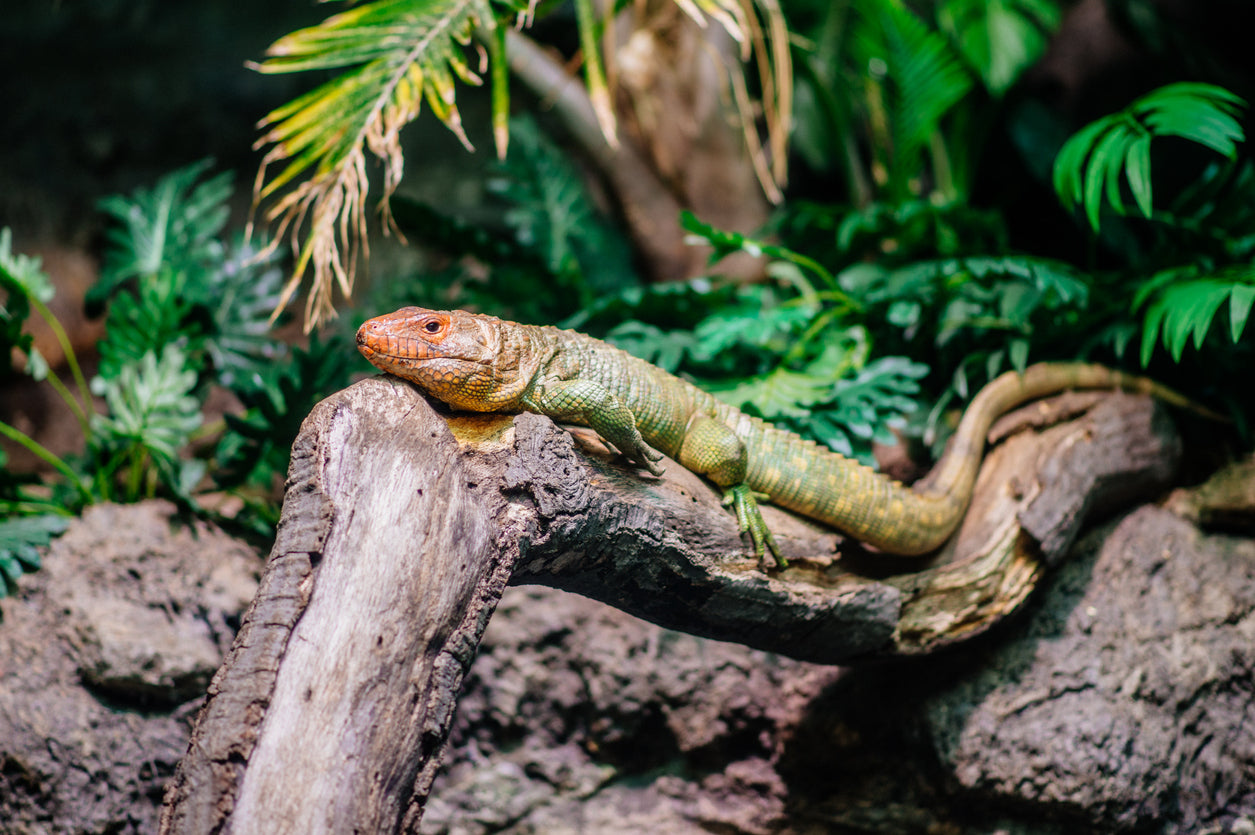Taking on a new family pet is always exciting, but it’s also a big commitment. A new addition to your household is a lot of fun, but make sure that you're in it for the long haul and not just caught up in the moment. Reptiles and amphibians in particular can be attractive possibilities as a first pet. They don't take up a lot of space, they’re cool to look at, and don’t need to be played with regularly.
If you're considering getting a reptile as your child's first pet, there are a few things to think about:
Are Reptiles/Amphibians Good Pets for Kids?
Pets can teach kids about empathy and caring for another creature. As kids learn to care for, and love their new pet, they will learn about what makes their pet happy and what could make the pet unhappy. Teaching these skills to your children is very important, and having something that your child can see affected by the decisions they make helps them to realize the effects these changes can have on a living being.
That being said, it’s VERY important not to just dump the pet on your kid and expect that you won’t have to do anything. It’s very likely that you will end up being the primary caretaker for your child’s pet, so don’t get anything you’re not willing to learn about and care for.
Responsibility
Taking care of something, especially a pet, can teach children a level of responsibility that they wouldn't be able to gain from anything else. However, you will need to ensure that your child learns how to care for their pet properly, and carries out their daily responsibilities regularly.
Confidence
Giving your kid a "job" can help them to feel more confident about taking on tasks in their general life and help them to learn confidence, then go on to apply that same confidence to other areas of their life. Letting them know when they have done an excellent job or when there are areas that they need to improve on can teach them essential life skills. However, this kind of responsibility can be learned from chores just as well as it can be from a pet.
Companionship
Kids have an awful lot to say, so having a non-judgemental companion to keep them company and that they can talk to can be valuable for a child. A reptile or amphibian will patiently listen to your child, no matter how many times they might hear the same story!
Research!
Caring for an exotic pet is very different from caring for a cat, dog, or even a hamster. Your child will need to do lots of reading and research to familiarize themselves with their new pet’s particular needs. This can motivate your child to learn in a way that they might not be interested in doing at school.
Reptiles and Amphibians Have Special Needs
If you’re not interested in taking care of a pet that has very specific needs and requires an enclosure that is essentially a replica of its native habitat, then a reptile or amphibian is not the pet for you.
In preparing for a pet reptile or amphibian, you must do as much research as you possibly can. You need to know what your pet eats, what type of equipment they need, appropriate basking temperature and UVB exposure, what their general behavior is like, and how much space they need, among other things. You will also need to know about common health problems that affect them.
There is no such thing as doing too much research, but it is possible to do your research from the wrong sources. Not all forums and Facebook groups are reliable sources of information. Not all websites or even books are reliable, either. So you’ll need to be very careful. Generally speaking, you can trust sources that rely on science and data from the animal’s natural habitat. This includes sources like ReptiFiles. The better prepared you are, the more rewarding the experience will be for yourself, your family, and your new pet.
The Five Best Starter Reptiles/Amphibians
There are many different types of reptiles and amphibians, so you have lots of options when it comes to choosing a new pet for your family. Some are more suitable than others for a new keeper, especially for kids. Suitability is usually down to the level of care that they require but also comes down to how docile the pet can be, how easy they are to manage, and how engaging they can be. Here are some of the top choices.
Bearded Dragon

Bearded dragons are one of the most popular pet lizards in the USA. They tend to be docile, personable, and tolerate humans well. As long as they are treated kindly, they are pretty easy-going to the point where they will even allow themselves to be dressed up for Halloween!
Bearded dragons need high basking temperatures, strong UVB lighting, and a fairly large enclosure (no smaller than 48”L x 24”W x 24”H). They are also omnivores, so they require both insects and vegetation to eat, in appropriate ratios to their life stage.
Leopard Gecko

Leopard geckos are popular because they’re small, easygoing, and easy to handle. They are also hardy and tolerate beginner mistakes well, which makes them a great starter reptile. However, do note that leopard geckos should never be grabbed by their tail, as they can detach their tails when startled, which is traumatic for their mental health and strenuous for their body to re-grow.
Leopard geckos need moderate basking temperatures, low-level UVB lighting, moderate to low humidity, and an enclosure no smaller than 36”L x 18”W x 16”H. They are also insectivorous, so expect to buy lots of feeder insects like dubia roaches, crickets, mealworms, hornworms, and others.
Crested Gecko

Crested geckos are popular because they’re small, tolerant of newbie mistakes, and usually fairly handleable. Plus, they don’t take up much space, and their tropical terrariums can make a beautiful addition to home decor. The hardest part of keeping a crested gecko is making sure to maintain a high level of humidity in their terrarium.
Crested geckos need low basking temperatures, low-level UVB lighting, high humidity, and a tall enclosure no smaller than 18”L x 18”W x 24”H. These geckos are omnivores, requiring a diet of fruit and insects, and they do best when these needs are met via a combination of live insect prey and high-quality commercial crested gecko diet.
Corn Snake

The corn snake is one of the most popular pet snakes on the market, as they’re very hardy, tolerate handling well, and don’t grow too large. Corn snakes have been bred in captivity for a long time, resulting in a wide variety of interesting colors and patterns. The biggest challenge with corn snakes is the potential for escape, as they’re very clever, and they’re very small as babies.
Corn snakes require moderate basking temperatures, moderate humidity, low-level UVB, and an enclosure no smaller than 48” x 24” x 24” that allows them to climb and explore. One of the nice things about having a pet snake is that they don’t need to eat very often — just once every 1-3 weeks, depending on the snake’s age. As snakes, they need to eat whole small animals in order to get the nutrition that they need. The good news is that it isn’t necessary to give them live rodents as prey, but using frozen or pre-killed prey is still disturbing for some.
White’s Tree Frog

White’s Tree Frogs, also known as the Dumpy Tree Frog or Australian Green Tree Frog, are readily available because they tend to do well as pets. Plus, their comical pudgy appearance makes them entertaining to observe and study. They also don’t jump as often as other frogs, making them easier to handle.
White’s Tree Frogs need high humidity, low temperatures, low-level UVB, and an enclosure no smaller than 18” x 18” x 24”. Like most frogs, these frogs are insectivorous, so they require a diet of live feeder insects such as crickets, dubia roaches, mealworms, and black soldier fly larvae. Take care to not overfeed them, as obesity is a common issue in this species.
This list doesn't contain every single reptile or amphibian that can make a great starter pet, and there are more that could be a perfect fit for you. The Clint’s Reptiles channel on YouTube can be a helpful resource for making your decision. The main thing to remember is always to do your research, figure out what you have room for, have time for, and what fits into your schedule and needs as a family when making your selection for what pet you think will be the best starter pet for you.



Leave a comment
All comments are moderated before being published.
This site is protected by hCaptcha and the hCaptcha Privacy Policy and Terms of Service apply.